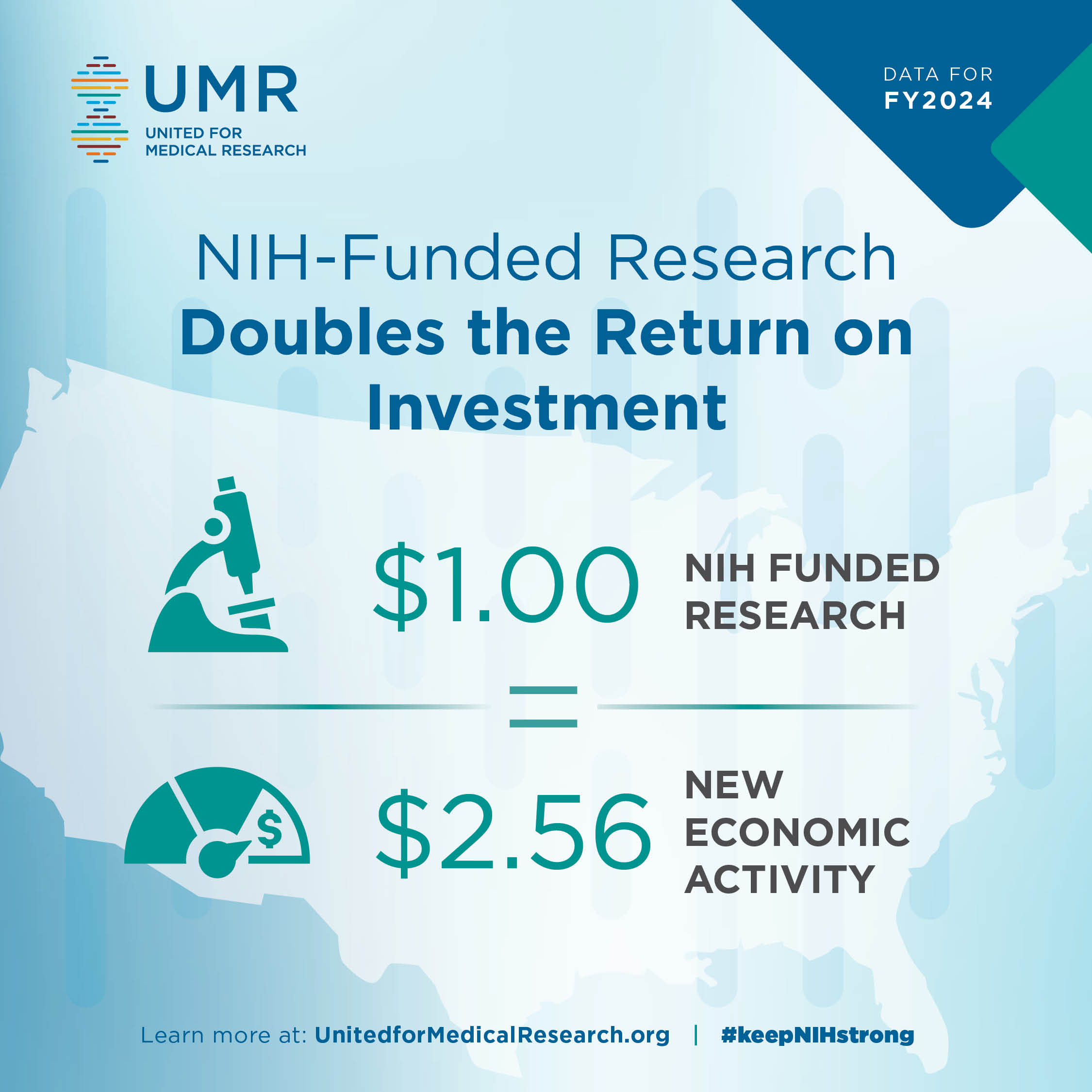
By Kritika Agarwal
Every $1 spent by the National Institutes of Health (NIH) in research funding in FY24 generated $2.56 of economic activity, according to a new report by United for Medical Research (UMR) on the “NIH’s Role in Sustaining the U.S. Economy.” (AAU is one of UMR’s founding members.)
The NIH is the federal government’s premier medical research agency and one of the largest funders of medical research in the world. Biomedical and health research supported by the NIH through its 27 institutes and centers has led to countless discoveries and innovations that have improved the health of all Americans.
For example, it was NIH-supported research that led to the development of the naloxone nasal spray that is now used widely by bystanders and emergency responders to reverse the effects of an opioid overdose. And it was NIH research that led to the discovery of the connection between cholesterol and heart disease; NIH research also helped create the subsequent prevention and cholesterol-lowering strategies that led to a 67.6% decline in deaths from heart disease between 1969 and 2015.
The UMR report underscores that, in addition to supporting lifesaving research, the NIH provides “a powerful return on investment” to the federal government and American taxpayers by creating jobs and fueling economic activity across the country.
UMR’s analysis finds that, in FY24, the NIH “awarded $36.94 billion in extramural research funding to researchers in all 50 states and the District of Columbia,” and that “this funding directly and indirectly supported 407,782 jobs and produced $94.58 billion in new economic activity nationwide.” Since FY15, the report notes, NIH research funding has “driven more than $787 billion in new economic activity and supported an average of more than 370,000 jobs per year.”
As UMR explains, when the NIH awards funding to medical researchers across the United States, “that funding supports employment and the purchase of research-related goods, services, and materials.” Medical researchers, for example, need state-of-the-art laboratories and research equipment; secure data storage and high-speed computing and data processing; safety equipment; personnel for maintaining lab equipment or providing other support, including security, financial, administrative, or technical assistance; and more. Without NIH funding, many of these ancillary jobs would go away. Businesses that provide research-related goods and materials to labs would also be harmed.
Further, as the report points out, NIH-supported research at universities especially “leads to discoveries with commercial potential and the spinout of startup companies,” which generate further economic activity and growth. “By funding the basic scientific research that sets the stage for industry-led applied research and development (R&D), the NIH helps fuel the leadership of the U.S. life sciences, medtech, and biopharmaceutical industries,” UMR notes.
UMR also released updated state-by-state data on NIH’s economic impact. Every state received NIH funding in FY24; in seven states, the agency supported more than 20,000 jobs each. Visit the UMR website to see the impact of the NIH in your state.
The UMR report provides further evidence for why Congress must continue to fund the NIH and stave off any future cuts. As AAU President Barbara R. Snyder wrote last year, “History has demonstrated that our nation’s health and economy benefit disproportionately from one of the safest bets in science: strong federal support for the NIH.”
Kritika Agarwal is senior editorial officer at AAU.